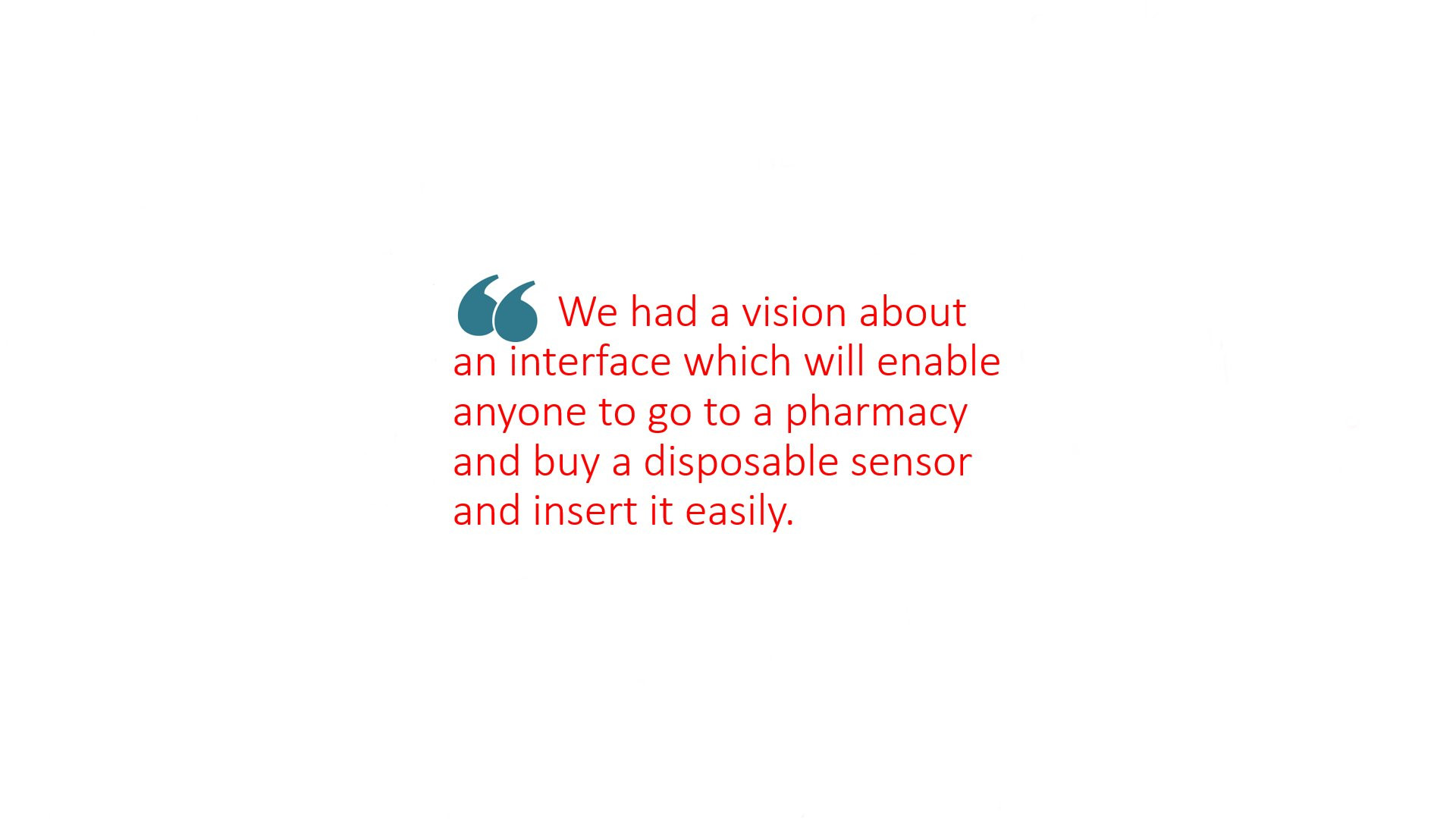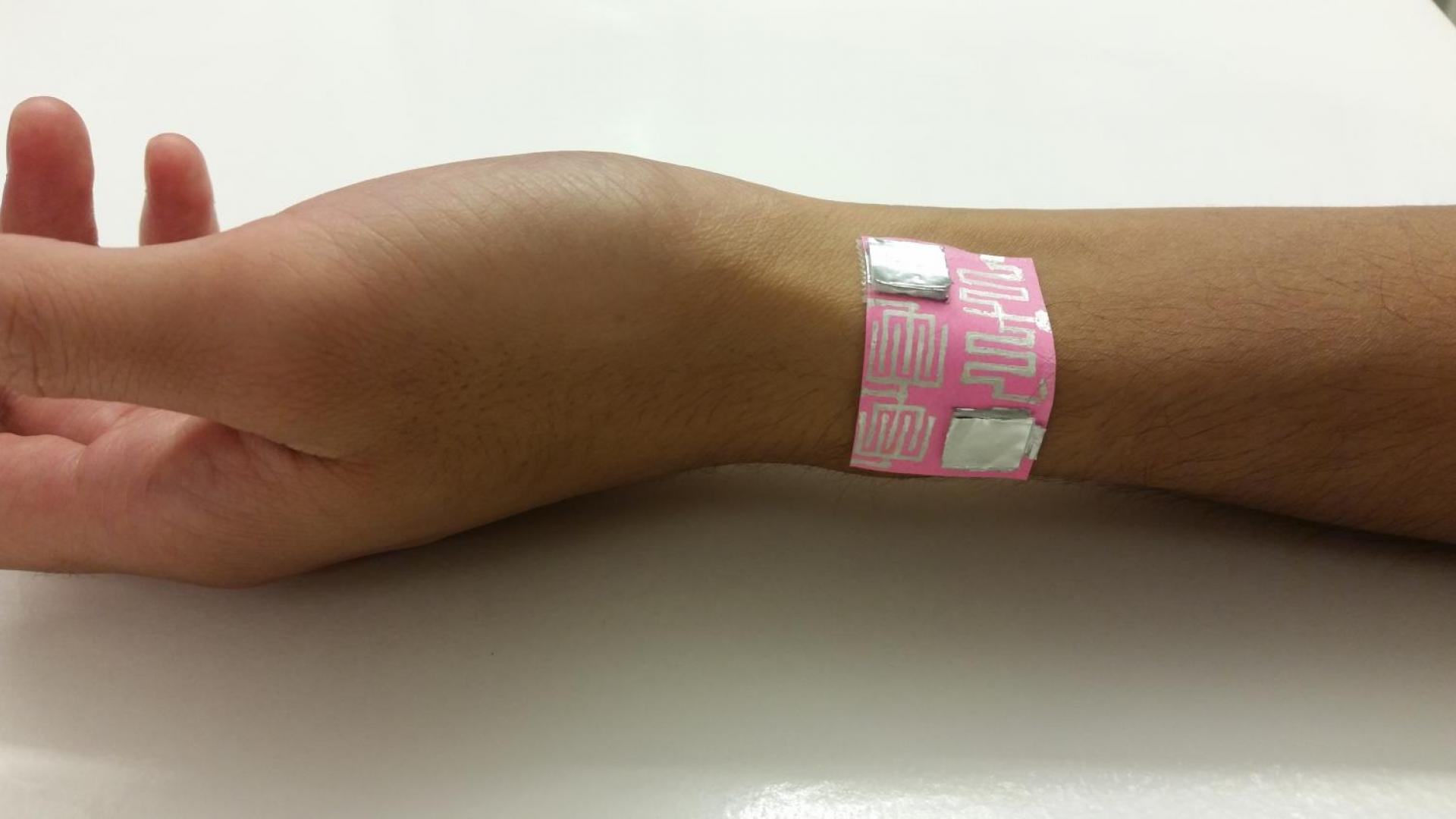-By Valentina De Vincenti
Give a Post-It Note paper to an Electrical Engineering team and you will see it turn onto the new alley to revolutionize modern medicine; an unprecedented wearable, budget-friendly and reliable a paper-based sensor for health screening encapsulated in a silicon wrist with a recycling high-tech design.
Body temperature, sweat levels, heart rate and blood pressure can now be monitored with no need to go to hospitals nor using costly technologies, dramatically rare in underdeveloped or developing countries.
Preannouncing inventors' leap for a medical spin-off, soon to be set this year, the wrist sensor is the impressive result achieved by Muhammad Mustafa Hussain, Professor of Electrical Engineering (EE), along with co-worker Joanna Nassar, student of the Electrical Engineer program at KAUST, and the team of the Integrated Nanotechnology Laboratory, under the Computer, Electrical and Mathematical Science and Engineering (CEMSE) Division.
"I really would like to disrupt the technology world by making technologies available to everyone, especially to those who cannot afford them," Hussain explained presenting the prototype which has already hit the headline in the January issue of the Advanced Material Technologies.

Successfully, the bold EE team tackled the current market of the wearable sensor, stormed by smart and fashionable wearable devices. But, too expensive and unable to measure health indicators, their price range exponentially from the US $50 to prohibitive hundreds of dollars.
Halved in prices, the EE's wrist sensor prototype costs US$25 only, and can easily be extracted and reused into another wrist case. The sensor is the natural development of a 3D stacked structure of environmental sensors based on simple household materials, also by the team.
"We had a vision about an interface which will enable anyone to go to a pharmacy and buy a disposable sensor and insert it easily," stressed Hussain. "This will give flexibility to innovators and consumers."
This time, Hussain and the EEp team went even further arranging all the sensors in a single fully integrated layer housed within a 3D-printed wristband. Pressure sensors were created with aluminum foil, double-sided tape, and polypropylene microfiber cleanroom wipes and located at the bottom of the layer.
Sat in the middle, a thinned silicon-based microprocessor chip; circuitry for the battery and power management formed the fourth layer. Finally, the top layer included a RFID tag for temperature and humidity sensors - made by drawing on a Post-It Note with the silver ink pen and attaching a flexible radio chip. Stress tests, made out of 300 bending and unbending cycles using software of the Chinese Academy of Sciences, shown high performances in adaptability.
"We will continue improving the device accuracy beyond its current benchmark of plus or minus five percent of the accuracy of those more expensive. And also, costs will be dropped off a US $5 each year. Everyone can now access to health screening regardless their state," Hussain promised.

